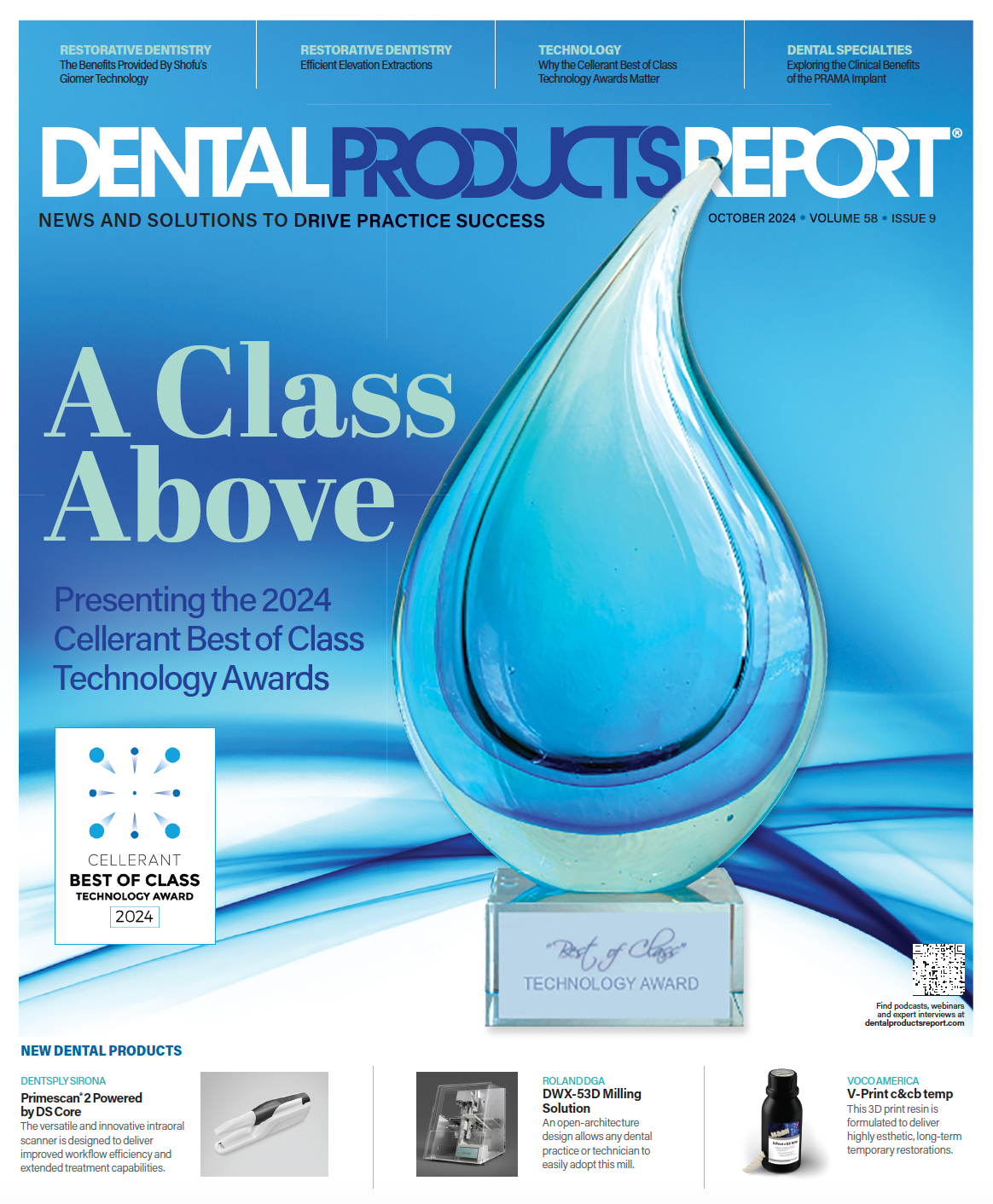SDI’s Stela Self-Cure Bulk Fill Flowable Self Cure Restorative Delivers Stress-Free Bulk-Fill Restorations
[ Sponsored ] In this article the author shows how SDI’s Stela solution makes lives easier for clinicians.
Figure 1. Despite fully curing for the entire manufacturer-recommended amount of time, our curing light simply was unable to penetrate further than 5 mm of thickness into this particular bulk-fill flowable composite product (I have purposely omitted the brand name).

Nausea, indigestion, upset stomach, diarrhea.” If you are even close to the same age as I am (I was born in 1978), you probably will have no difficulty placing these lyrics. They are from a hugely popular Pepto Bismol commercial jingle. The symptoms listed above, while incredibly displeasing, are a part of life, and thankfully the pharmaceutical industry has provided products that aim to mitigate

them.
Whenever I am faced with a bulk-fill situation, a much less catchy jingle plays in my head:
“Depth of curing, polymerization shrinkage, marginal leakage, sensitivity.”
Every dentist is quite familiar with these terms. We hate them, and like the occasional gastric issues we must face, they have been relegated to a displeasing part of life. Many products have been introduced that aim to mitigate these issues, but most have 1 or 2 glaring characteristics that make them less than ideal for the incredibly common need for placement of huge restorations. Let’s talk about each one of these products.
Traditional Light-Cured Bulk-Fill Flowable Composite
Flowable light-cured material that has higher levels of filler particles is incredibly convenient. The flowable nature allows the material to seep into deeper crevices, and the high concentration of filler product at least attempts to reduce the amount of polymerization shrinkage of the resin monomers when cured.
There are 2 big problems with this option. First, the more filler particles, the less chance for the curing light to penetrate deep into the prep (Figure 1). Second, even if the light cure penetrates to the entire bulk fill, this will result in simultaneous monomer polymerization, making shrinkage, marginal leakage, and sensitivity highly probable.
Incremental Fill of Packable Composite
Packable composite has a much higher concentration of filler particles, giving it a higher modulus of elasticity and resistance to wear. Because of the filler particle density, however, curing-light penetration is limited to 2 to 3 mm, requiring the clinician to apply, pack, and cure in small increments. This is not only inconvenient and time-consuming, but every incremental fill opens the door to the possibility of voids (Figure 2). Large fillings by their very nature have small crevices and potential undercuts, so it is impossible for the clinician to have complete confidence that all of those were filled in with the already-firm composite.
Resin-Modified Glass Ionomer
Although resin-modified glass ionomers (RMGIs) generally require a curing light, there is a self-cure component that makes the RMGI mechanism different from traditional composites. If a dentist chooses to wait for the product to chemically cure, it should, theoretically, eliminate the issues of curing-light penetration, shrinkage, and leakage. And RMGIs do successfully eliminate the first 2 issues; however, leakage and voids are still highly probable given the overall viscosity of this material.
The material is somewhere between flowable and packable, so if a dentist chooses not to light cure, they would extrude the material, wait a little while, and then attempt to pack it. Moreover, the limited amount of material in each RMGI capsule often runs out and requires another mix for large restorations. This is time-consuming and inconvenient, but more importantly, it introduces the potential for voids and leakage as we attempt to pack the newly mixed material onto the already-packed material (Figure 3). Because most dentists choose to light cure this material to save time, the same issues of microgaps and shrinkage can still occur.
Lastly, RMGIs simply do not have the same surface shine and polishability of traditional composites. The surface poses aesthetic problems and feels rough to the tongue. This is not an issue for crown buildups but certainly can be frustrating for direct resin restorations.
In Conclusion
Dentistry is, and probably always will be, difficult at times. No matter how much we try, patients will have limited opening, chubby cheeks, poor oral hygiene, and “gagginess.”
Thankfully, innovators constantly introduce strategies and products that make our lives just a little less painful. In this article I show how SDI’s Stela solution makes lives easier for clinicians.
In part 2 of this feature, we’ll take a close look at how this a self-cure bulk-fill flowable performs. This unique product self-cures at the point of contact with its proprietary primer/adhesive.
Stay tuned to learn more about the benefits of SDI’s Stela solution.
